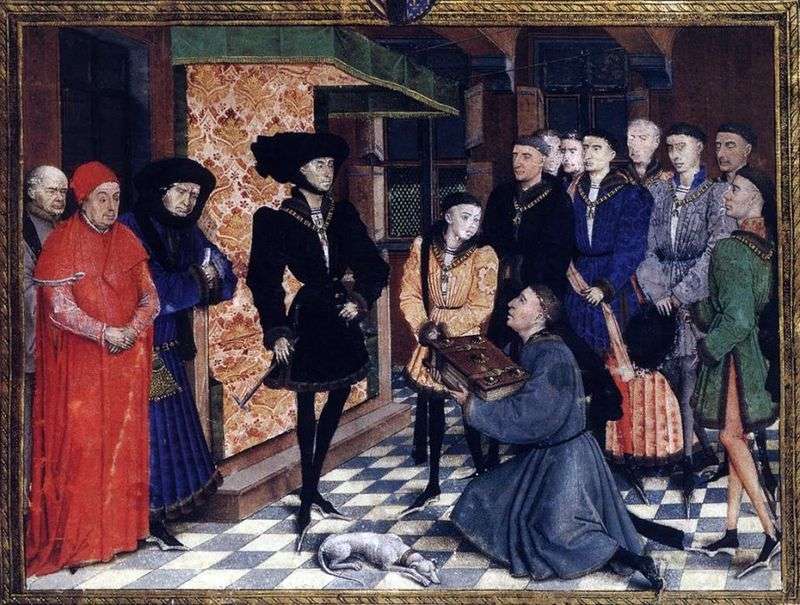
We do not have accurate evidence to confirm the work of Rogier van der Weyden as an illustrator, but one of the miniatures attributed to him is really performed in a manner characteristic of the artist. This miniature adorns the frontispiece of historical research, which is called the “Eno Chronicles.”
In another way, this work is called “The Chronicles of the Illustrious Princes of Genneghau.” In miniature, Jean Vauquelin is depicted presenting the translation of the “Chronicle” to Philip Dobrom, the duke of Burgundy. Work on his translation Voklen began in 1446, so the illustrations to his manuscript, apparently, were made a little earlier or later – in the same 1446 or 1447 year.
Some researchers believe that the miniature to the “Eno Chronicles”, shown at the top, is made by the artist’s hand, others tend to be made by a skilled miniature master in Roger’s drawing. There is evidence for both the former and the second theory.
We will note that this miniature demonstrates many of the features peculiar to the easel painting of Rogier, including the masterfully organized space of this tiny “picture” and the ultimate “characterization” of figures present on it.
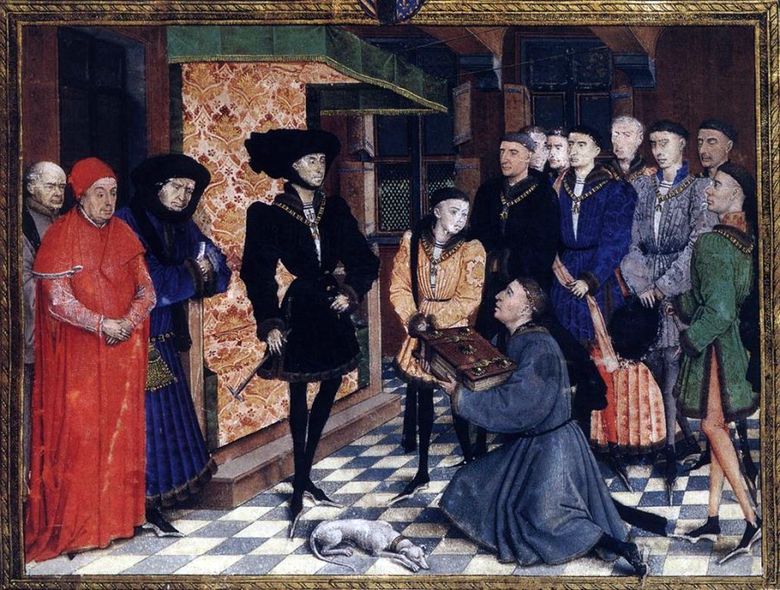 Chroniques du Hainaut – Rogier van der Weyden
Chroniques du Hainaut – Rogier van der Weyden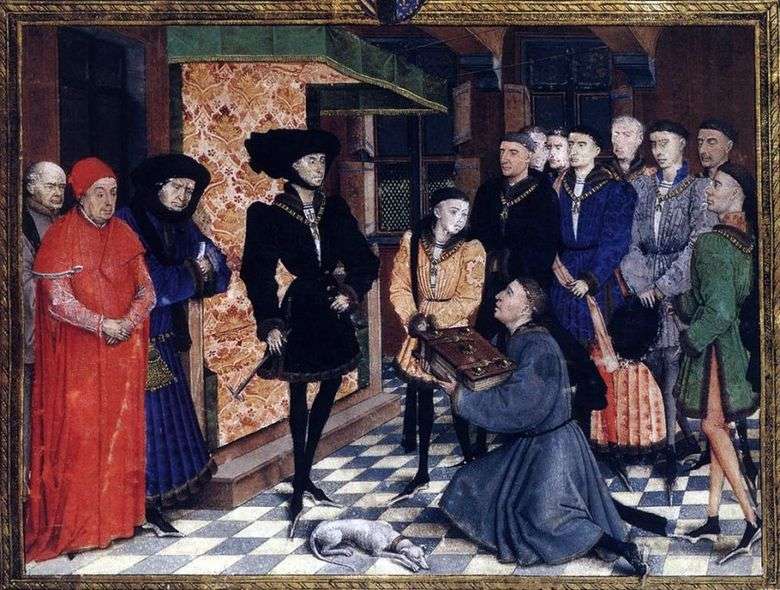 Las crónicas de Eno – Rogier van der Weyden
Las crónicas de Eno – Rogier van der Weyden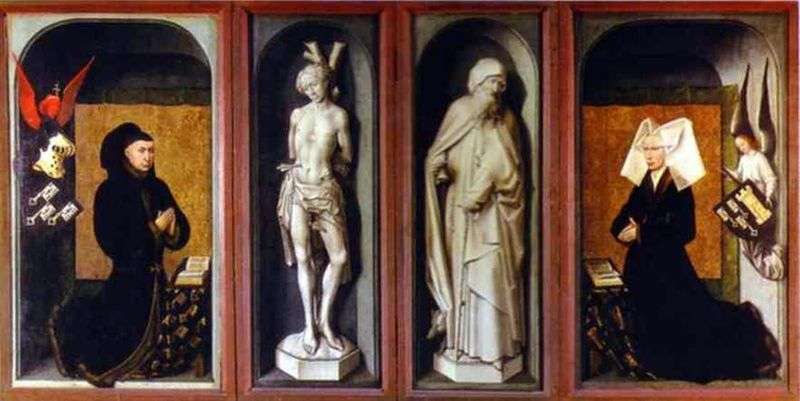 Portrait of Chancellor Rolen and his wife by Rogier van der Weyden
Portrait of Chancellor Rolen and his wife by Rogier van der Weyden Altar of St. John the Baptist by Rogier van der Weyden
Altar of St. John the Baptist by Rogier van der Weyden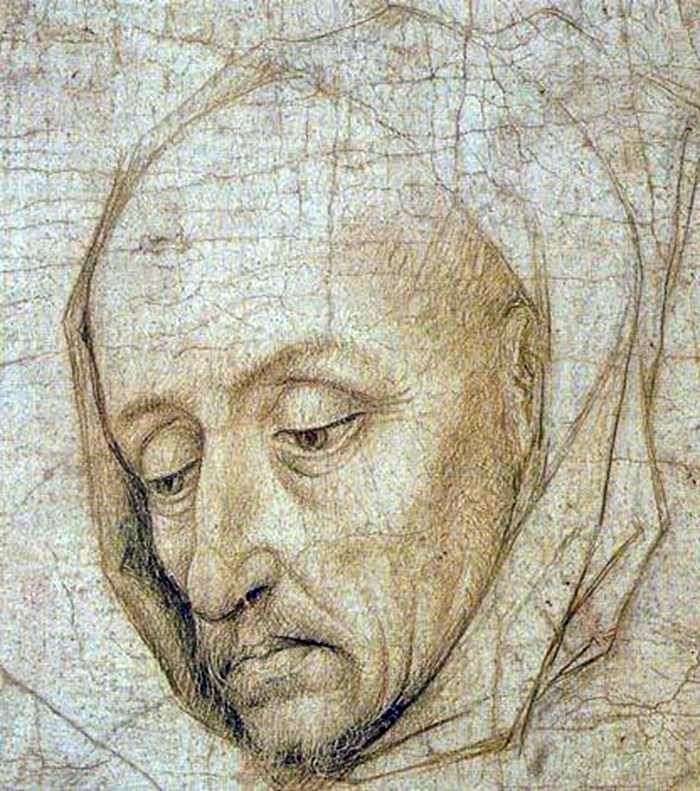 Head of St. Joseph by Rogier van der Weyden
Head of St. Joseph by Rogier van der Weyden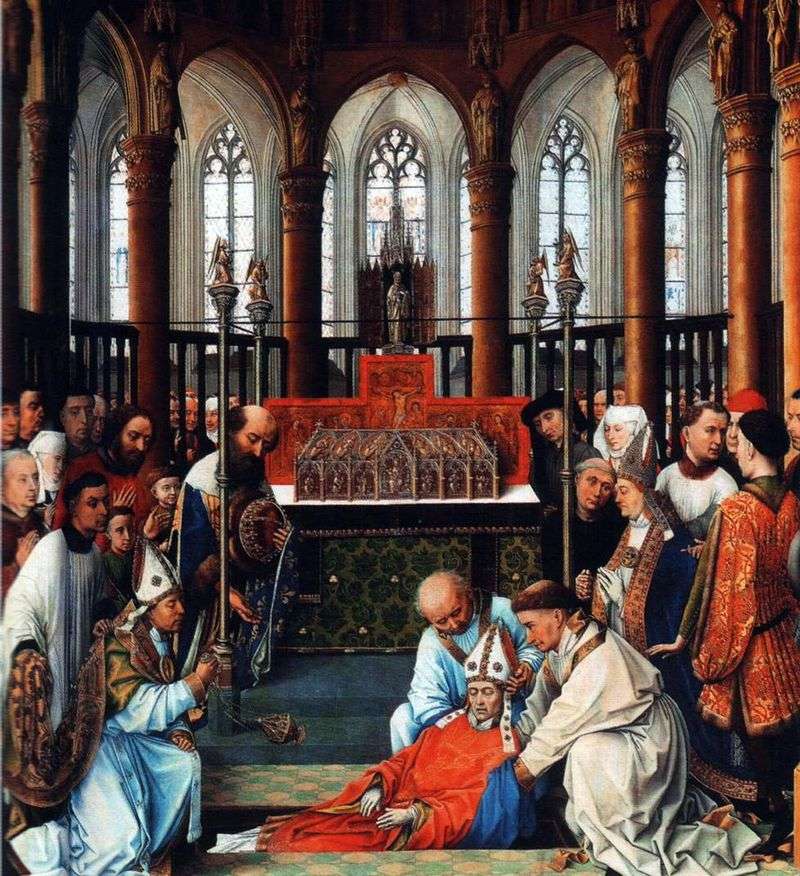 Discovering the Relics of St. Hubert by Rogier van der Weyden
Discovering the Relics of St. Hubert by Rogier van der Weyden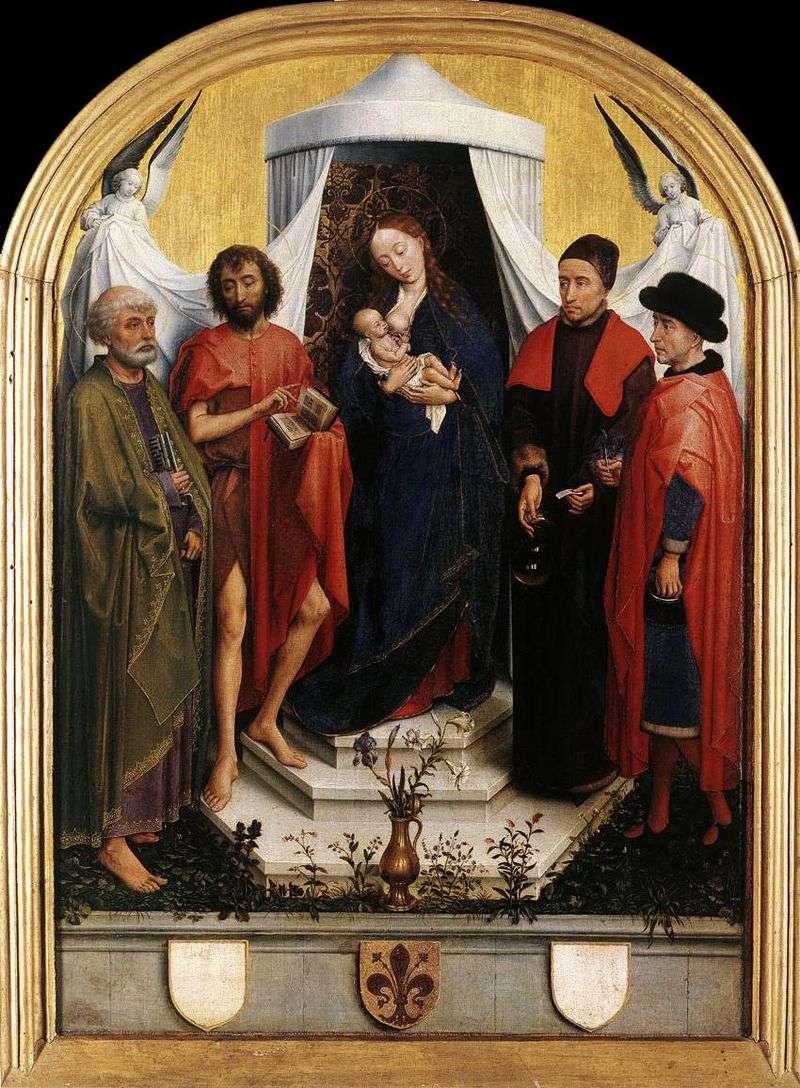 Madonna with the Child and the Four Saints by Rogier van der Weyden
Madonna with the Child and the Four Saints by Rogier van der Weyden Triptych “Crucifixion” by Rogier van der Weyden
Triptych “Crucifixion” by Rogier van der Weyden